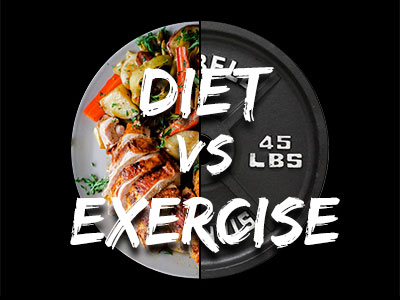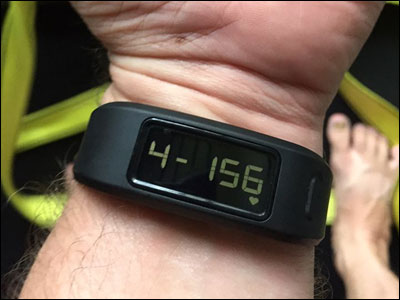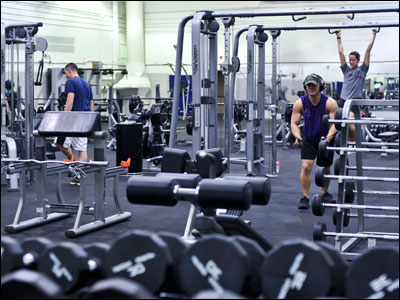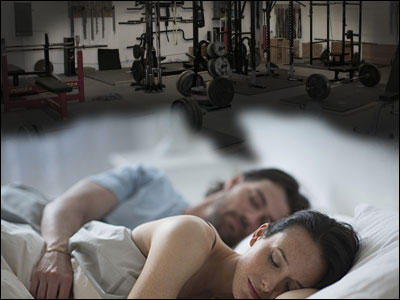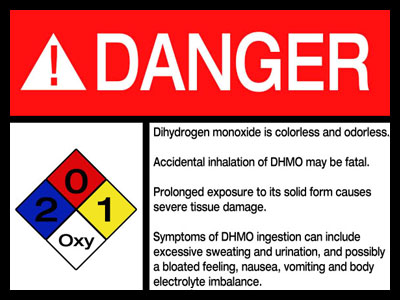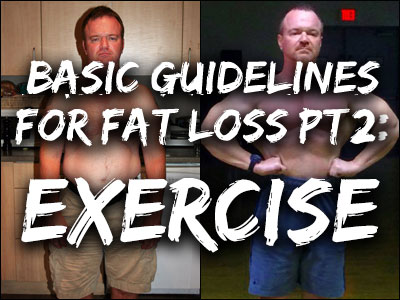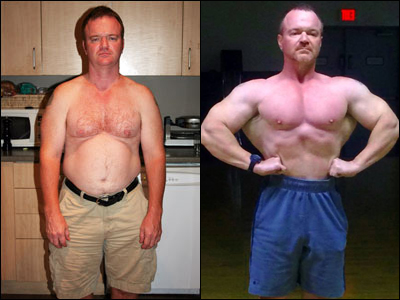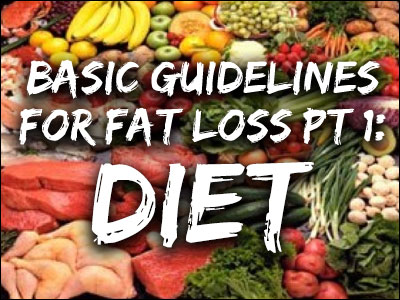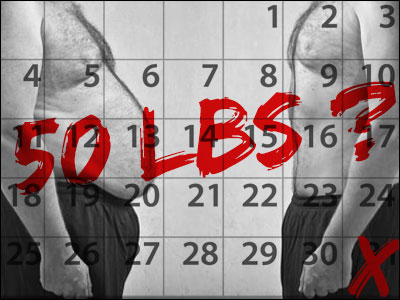While numerous factors affect fat gain and loss, by far the most important is energy balance: calorie intake versus calorie expenditure. If you consume more calories than your body burns over a period of time, you will gain fat. If you want to lose fat, you must consume fewer calories than your body burns. There are three basic ways to accomplish this:
- Reduce the amount of calories you consume.
- Increase the amount of calories you expend.
- A combination of the above.
Reducing Calorie Intake – How Low Should You Go?
Many people believe they can effectively lose fat simply by exercising or increasing their activity levels, however this approach is highly overrated. Most activities do not burn enough calories to be worth performing solely for that purpose, and a significant increase in activity levels will increase appetite, resulting in proportionally greater calorie consumption if intake isn’t being measured and restricted. Reducing calorie intake is a far more practical and time efficient means of creating an energy deficit.
Ideally, caloric intake should be reduced enough to cause the maximum possible rate of fat loss without the loss of muscle or other lean tissue. Muscle tissue is highly metabolically active, and responsible for a significant portion of the calories you burn each day. A loss of muscle results in reduced metabolic rate, so everything possible should be done to maintain muscle while fat is lost. This is especially important for competitive bodybuilders, who are judged on their muscle size.
Since there is a limit to the rate at which the body can get energy from fat, if the calorie deficit is too large the body will take energy from other tissues. According to a paper in the Journal of Theoretical Biology (1,2), it is estimated the average, moderately active person’s body can get approximately 30 calories of energy per day per pound of fat. This means the maximum one can reduce their calorie intake below maintenance levels without losing muscle is approximately 30 for every pound of fat on their body.* For example, an active 180 pound man with 15% body fat would have 27 pounds of fat, so he could reduce his daily calorie intake to about 800 below maintenance without losing lean tissue. Assuming a maintenance intake of approximately 2,800 this would mean a daily caloric intake around 2,000 calories.
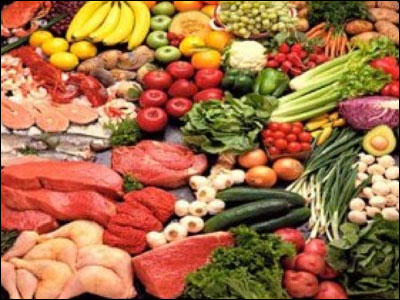
It is important to note these numbers are based on moderately active people not involved in a regular exercise program and not consuming enough protein. The rate at which the body is able to get energy from fat may increase with training and research shows regular resistance training and adequate protein intake helps maintain lean tissue at low calorie intakes (3,4,5,6). However, to maintain as much muscle as possible a conservative approach is best, so caloric deficit should not significantly exceed 31 per pound of body fat.
As fat is lost the caloric deficit must decrease proportionally to avoid loss of lean tissue. If our 180 pound man from the above example consumes 800 calories below maintenance, he should lose approximately 1.6 pounds of fat the first week (800 calories per day multiplied by 7 days = 5,600 calories, divided by approximately 3,500 calories in a pound of fat = 1.6). He would then have only 25.4 pounds of fat, and would have to decrease his caloric deficit to about 760 below maintenance to avoid muscle loss.
If you’ve been checking the math you’ll notice I’m rounding everything down. In the long run it is better to err a little low on your calorie deficit and lose fat slightly more slowly than to err high and risk losing muscle mass.
Since the maximal caloric deficit must decrease as fat is lost, it is necessary to regularly re-assess body fat and maintenance calorie intake levels and adjust daily calorie intake appropriately. However, since body fat percentage, basal metabolic rate, and calories burned due to daily activity and calories consumed can not be measured with perfect accuracy, and metabolic rate will decrease slightly over time as a result of your body adjusting to the reduced calorie intake, there is little point in re-assessing too frequently. Weekly or bi-weekly assessment and adjustment is adequate under most circumstances.
Calorie Deficit Versus Nutrient Intake For Obese Individuals
Obese individuals may have enough fat to provide close to or even more energy per day than the amount their body requires. However, regardless of the amount of body fat you have, your daily caloric intake should not be reduced below a level necessary for adequate intake of essential macro and micronutrients. The absolute minimum daily calorie intake I would recommend without medical supervision would be approximately half of the estimated daily calorie expenditure.
For example, a 300 pound man with 45% body fat has enough fat to provide over 4,000 calories in a day. Unless he is extremely active this is far more energy than he requires. However, he would still need to eat enough food to provide adequate protein, fat, carbohydrate, and essential vitamins and minerals to function normally.
Some people may have other health conditions with their own nutritional considerations and should consult with a medical doctor before making any significant dietary changes.
Estimating Daily Calorie Expenditure
The average daily calorie expenditure can be roughly estimated for most moderately active people by multiplying their estimated healthy body weight (around 15% body fat if male, 20% if female) by 15. Smaller and/or sedentary people may need to multiply by as little as 12 to 14, while larger and/or very active people may need to multiply by as high as 16 to 18. (7)
A slower but more accurate method of estimating daily calorie expenditure is to measure and record your daily calorie intake and your body weight and body fat percentage every two to four weeks (if you are female you should always weigh and measure at the same time in your menstrual cycle) and calculate your maintenance calorie intake based on any changes in body weight. If you’re gaining weight your daily caloric intake is over maintenance level, if you’re losing weight it’s under. For example, if you are losing half a pound of fat per week on average, your average daily calorie intake is approximately 250 calories below maintenance.
Regardless of your starting estimate it will be necessary to measure and record your daily calorie intake and regularly reassess your weight and body fat levels, and adjust your intake up or down based on how your body responds.
Measuring Body Composition
While there are a variety of methods for determining body fat percentage, the most practical and cost efficient for most people is skinfold measurements. A three-site skinfold test (chest, abdomen and thigh for men, triceps, suprailium and thigh for women) performed by a skilled technician will provide a reasonably accurate measurement of body composition. (8) Most fitness centers and personal training studios offer skinfold testing or another form of body composition testing for a fee.
You can measure your own body fat with the help of a friend and a skinfold caliper, which can be purchased inexpensively online or at most fitness equipment and health food stores.
A slightly more expensive but easier option is to use a scale that uses bioelectrical impedance analysis (BIA) to estimate body fat percentage. Since these measure impedance to an electrical current which seeks the shortest path through the body, a scale like the Omron that uses both hand and foot contacts will provide a more accurate estimate of overall body composition for most people than BIA devices with only hand or foot contacts.
Calculating Daily Calorie Intake for Fat Loss
Multiply your body fat in pounds by 30 and subtract the result from your daily maintenance calorie intake to determine your minimum daily calorie intake to maintain muscle while losing fat. I do not recommend going below half of your estimated daily maintenance calorie intake without medical supervision.
While the above should provide a reasonably good estimate of the daily calorie intake required for near maximal fat loss while maintaining lean tissue, regardless of what your calculations show, remember that practical results are what count. If you do not lose a measurable amount of fat over a period of several weeks gradually reduce your calories until you do, or if your physical or mental performance declines gradually increase your calories until it improves.
For a detailed guide to calculating calorie intake for maximum fat loss with worksheets read Getting Ripped.
Protein, Carbohydrate, and Fat
Although calorie intake is the most important factor for fat loss, the macronutrients you consume also have an effect. Most importantly, adequate protein intake is necessary to maintain lean tissue while eating below maintenance calorie levels, and there are other benefits to higher protein intake such as increased satiety, and a greater metabolic cost compared to fats and carbohydrates. Protein intake should be around one gram per day per pound of lean body mass, and consist of primarily meat, fish, eggs, poultry, and dairy. The remainder of your calories should come equally from fats and carbohydrates, with most of the fats coming from animal sources or coconut, and most of the carbohydrates coming from vegetables.
Meal Timing
What and how much you eat on average over the course of each day is far more important than when you eat it, so you should divide up your meals in whatever way works best for you. Some people find it easier to eat six to eight smaller meals spread throughout the day, some find it easier to consume only one or two meals within a short time frame and fast the rest of the time, and many find something in between works best for them. Some people eat different numbers of meals on different days depending on their schedule or whether they work out. The best meal frequency for you is the one that is easiest to follow consistently.
Hydration
Drink plenty of fluids over the course of each day. Staying adequately hydrated helps to reduce appetite and enables your kidneys to function optimally. If the kidneys are not functioning well, the liver will take on some of their work, reducing its capacity to metabolize fat for energy. It isn’t necessary to consume a specific amount of water per day, but pay attention to your body and drink something whenever you are thirsty.
Supplements
The majority of fat loss supplements do very little or nothing, and the rare few that are effective won’t make any noticeable difference unless the above dietary guidelines are being followed. Fish oil helps reduce fat and improves other health factors in combination with regular exercise (10), and protein powder or high-protein meal replacements can be helpful if you are having difficulty getting adequate protein from food or finding time to prepare nutritious meals. The ECA stack (20-25 mg ephedrine, 200 mg caffeine, and a baby aspirin one to three times daily) also helps with fat loss, but if you use this you should start with half the typical dose only once per and gradually increase from there.
Keeping Track
The only way to know you are eating the right amount of food each day is to measure and record it in a journal or app. Most people significantly underestimate the amount of calories they consume so guessing or estimating doesn’t work. It may seem inconvenient at first but it only takes a few seconds to weigh or measure and look up the nutritional value of something and record it. Smart phone apps like LoseIt! and MyFitnessPal make this process even easier.
Purchase a digital food scale and several sets of measuring cups and spoons. You will be using them often, and the more you have the less frequently you will need to wash dishes. Having a lot of plastic food storage containers also makes it easier to prepare and package multiple pre-measured meals for the rest of the week.
Continue to Basic Guidelines for Fat Loss Part 2: Exercise
Notes:
* “A limit on the maximum energy transfer rate from the human fat store in hypophagia is deduced from experimental data of underfed subjects maintaining moderate activity levels and is found to have a value of (290 ± 25) kJ/kg d. A dietary restriction which exceeds the limited capability of the fat store to compensate for the energy deficiency results in an immediate decrease in the fat free mass (FFM). In cases of a less severe dietary deficiency, the FFM will not be depleted.” (2)
References:
1. Determining the Maximum Dietary Deficit for Fat Loss. Lyle McDonald. 2006. http://www.mindandmuscle.net/mindandmuscle/magpage.php?artID=35&pageNum=1
2. Alpert SS. A limit on the energy transfer rate from the human fat store in hypophagia. J Theor Biol. 2005 Mar 7;233(1):1-13.
3. Goldberg AL, Etlinger JD, Goldpsink DF, Jablecki C. Mechanism of work-induced hypertrophy of skeletal muscle. Med Sci Sports. 1975 Fall;7(3):185-198.
4. Stiegler P. Cunliffe A. The role of diet and exercise for the maintenance of fat-free mass and resting metabolic rate during weight loss. Review Article. Sports Medicine. 2006. 36(3):239-262.
5. Layman DK, Evans E, Baum JI, Seyler J, Erickson DJ, Boileau RA. Dietary protein and exercise have additive effects on body composition during weight loss in adult women. J Nutr. 2005 Aug; 135(8):1903-1910.
6. Alexander JL. The role of resistance exercise in weight loss. Strength and Conditioning Journal. 2002 Feb 24(1):65-69.
7. Clark, Nancy. Nancy Clark’s Sports Nutrition Guidebook, 3rd ed. Champaign, IL. Human Kinetics, 2003.
8. Baun WD, Baun MR, Raven PB. A nomogram for the estimate of percent body fat from generalized equations. Research Quarterly for Exercise and Sport. 1981. 52:380-384
9. Hedge SS, Ahuja SR. Assessment of body fat content in young and middle aged men: skinfold method versus girth method. J Postgrad Med. 1996 Oct-Dec:42(4):97-100.
10. AM Hill, JD Buckley, KJ Murphy, et al. Combined effects of omega-3 supplementation and regular exercise on body composition and cardiovascular risk factors. Asia Pac J Clin Nutr, 2005; 14 Suppl: S57.
